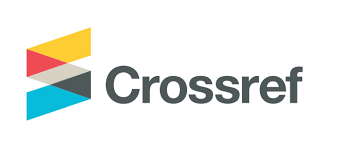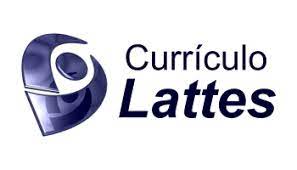Primitive neuroectodermal tumor (PNET) with massive bone marrow invasion simulating the initial diagnosis of acute leukemia
DOI:
https://doi.org/10.47456/rbps.v25i1.40132Keywords:
Primitive neuroectodermal tumors, Differential Diagnosis, Acute leukemiaAbstract
Introduction: Primitive neuroectodermal tumors (PNETs), although rare, are more frequent in adolescence. They generally affect the central nervous system, bones, or soft tissues. Objective: To demonstrate, through a case report, the difficult assertive and early diagnosis of a solid neoplasm primarily invading the bone marrow, with an atypical clinical presentation, which may simulate acute leukemia. Methods: Collecting clinical, laboratory, and medical data in the Clinical Medicine and Hematology units of Hucam. Results: Female patient, 19 years old, initially presented cutaneous-mucosal bleeding, associated with normocytic anemia, normal leukogram, thrombocytopenia, and increased lactate dehydrogenase, without other laboratory alterations. Myelogram analysis has shown intense infiltration of the bone marrow by cells with immature characteristics, which strongly suggested acute leukemia. Conclusion: The final diagnosis was a primitive neuroectodermal tumor based on the histopathological study of the bone marrow biopsy. The diagnosis of some neoplasms is challenging due to their rare incidence and/or atypical clinical presentation. This work raises the importance of clinical correlation with data from laboratory diagnostic investigation, stimulating clinical reasoning in the face of several differential diagnoses, alerting the medical community to similar cases and favoring patient safety, avoiding inappropriate treatments, and interfering with the clinical outcome.
Downloads
References
Dehner LP. Primitive neuroectodermal tumor and Ewing’s sar¬coma. The American Journal of Surgical Pathology. 1993;17(1):1-13.
Simão NM, Simão AA, Barbosa FA, Ribas GF, Marins RM, Pereira LV, Barbosa, AA. Tumor neuroectodérmico primitivo. Relato de caso. Revista Brasileira de Clínica Medica. 2011;9(5):393-396.
Zavarize JD, Saito OS, Ferreira FP, Leal F, Soares DJ, Luiz JM. Primitive neuroectodermal tumor in advanced age: case report. Brazilian Journal of Oncology. 2020;16:1-2.
Romero R, Abelairas J, Sanz J, Ruiz MM, Sendagorta E. Recur¬rence of peripheral primitive neuroectodermal tumor of the orbit with systemic metastases. Archivos de la Sociedad Espa¬nhola de Oftalmologia. 2006;81(10):599-602.
Barrozo AJ, Nascimento CA, Teixeira GC, Freire GS, Koga K. Tumor primitivo neuroectodérmico: relato de um caso de padrão incomum. Brazilian Journal of Health Review. 2021;4(2):7263- 7267.
Antonangelo L, Rosa AG, Corá AP, Acencio MM, Moreira LC, Suso FV. Derrame pleural incomum: metástase pleuropulmo¬nar de tumor neuroectodérmico primitivo. Jornal Brasileiro de Pneumologia. 2009;35:606-609.
Almeida ALC, Bispo DB, Arias VN, Gomes LM, Homsi LC, Abadia MS, Ribeiro MA. Tumor neuroectodérmico primitivo em ovário: um relato de caso. Brazilian Journal of Development. 2021;7(1):10136-10143.
Silva DM, Oliva RN, Chen VG, Alves MT, Fujita RR. Tumor neu¬roectodérmico periférico em cavidade nasal-relato de caso. Bra¬zilian Journal of Otorhinolaryngology. 2020;86:s41-s43.
Romero IL, Pereira LS, Campos FA, Vital Filho J., Bison SH. Tumor neuroectodérmico primitivo periférico primário da órbita: relato de caso. Arquivos Brasileiros de Oftalmologia. 2008;71:871-873.
Costa CM, Rondinelli P., de Camargo B. Tumor neuroectodér¬mico primitivo na infância: relato de 13 casos e revisão da lite¬ratura. Revista Brasileira de Cancerologia. 2000;46(3):293-298.
Downloads
Published
How to Cite
Issue
Section
License
Copyright (c) 2023 Brazilian Journal of Health Research

This work is licensed under a Creative Commons Attribution-NonCommercial-NoDerivatives 4.0 International License.
Authors and reviewers must disclose any financial, professional, or personal conflicts of interest that could influence the results or interpretations of the work. This information will be treated confidentially and disclosed only as necessary to ensure transparency and impartiality in the publication process.
Copyright
RBPS adheres to the CC-BY-NC 4.0 license, meaning authors retain copyright of their work submitted to the journal.
- Originality Declaration: Authors must declare that their submission is original, has not been previously published, and is not under review elsewhere.
- Publication Rights: Upon submission, authors grant RBPS the exclusive right of first publication, subject to peer review.
- Additional Agreements: Authors may enter into non-exclusive agreements for the distribution of the RBPS-published version (e.g., in institutional repositories or as book chapters), provided the original authorship and publication by RBPS are acknowledged.
Authors are encouraged to share their work online (e.g., institutional repositories or personal websites) after initial publication in RBPS, with appropriate citation of authorship and original publication.
Under the CC-BY-NC 4.0 license, readers have the rights to:
- Share: Copy and redistribute the material in any medium or format.
- Adapt: Remix, transform, and build upon the material.
These rights cannot be revoked, provided the following terms are met:
- Attribution: Proper credit must be given, a link to the license provided, and any changes clearly indicated.
- Non-Commercial: The material cannot be used for commercial purposes.
- No Additional Restrictions: No legal or technological measures may be applied to restrict others from doing anything the license permits.

























